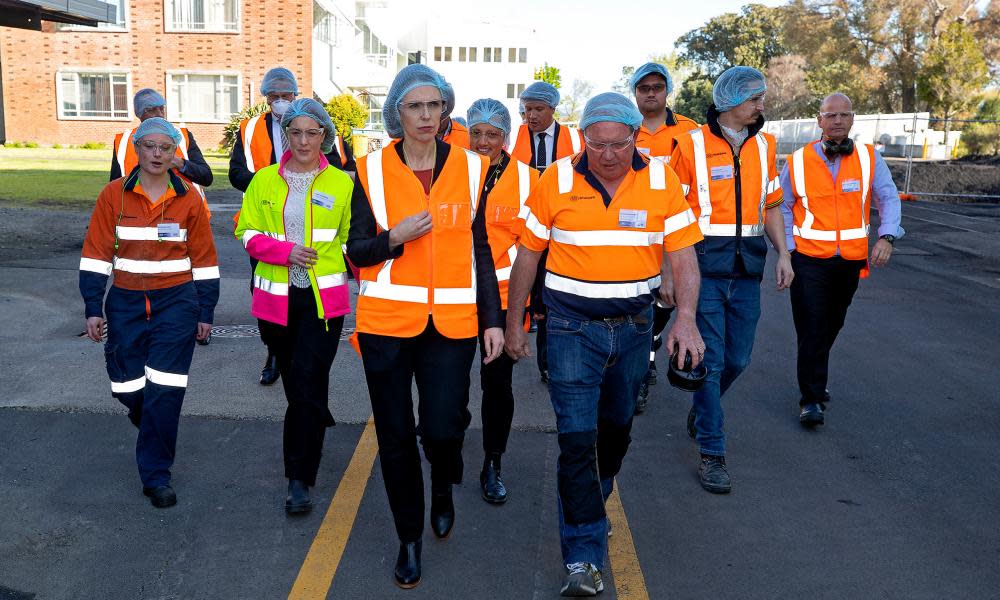New Zealanders want small parties at the political table, but the system is stacked against them

If you are a follower of New Zealand politics, you’d be forgiven for thinking that the 2020 general election is fundamentally a contest between New Zealand’s two major parties, Labour and National. This is the 28th election they have been in the main ring together, and every government formed since 1935 has been led by one of them.
Outside these two, there are 16 other political parties registered with the New Zealand Electoral Commission. Most, though not all, will be standing candidates and/or a list in this year’s MMP (Mixed Member Proportional) election. The three “minor” parties will also context the vote – the Greens, New Zealand First and ACT – and those which have been in parliament before, like the Māori Party. But even in New Zealand, most voters would be hard pressed to name many, if any, of those remaining.
The Opportunities Party, Advance NZ/NZ Public Party, Sustainable NZ, Vision NZ, the New Conservatives, NZ Democrats for Social Credit are some of the remaining contenders. As small parties, they have been dubbed the outliers, a statistical term normally used to describe a data point that differs significantly from other observations. Immediately, this labelling signals them as being odd, the other, alternative, not to be taken too seriously.
And yet, with very little daylight between the major party policy platforms currently on offer to New Zealand voters, if there is any election where alternative voices and vision are needed, it is this one.
With post-Covid economic recovery front and foremost, both National and Labour are promoting plans which focus heavily on jobs, infrastructure investment and support for small business. The differences between them are in policy emphasis and in the character of their leaders, rather than their vision for what sort of “new” New Zealand we aspire to be when we come out of this crisis. In 2020, originality seems to have taken a back seat to responsible fiscal management.
And so it is to the small parties we need to look if we are in search of a vision that is different from the mainstream. As Opportunities Party leader Geoff Simmons recently commented: “We’re looking beyond the three-year cycle of getting re-elected and we want to talk about the really big issues that are affecting the country long-term, because most career politicians don’t worry about those sorts of things – they just worry about getting re-elected.”
Sadly, however, the small parties face an impossibly steep uphill climb to even be seen and heard by most voters.
Some may think that having two major parties survive for the past 85 years is a sign of the stability of New Zealand’s democracy. In reality it’s partly an outcome of the major-party duopoly advancing their self-interest by controlling the rules around election funding of advertising so that the bulk of the broadcasting allocation (the state fund for party TV, radio and internet advertising) is distributed to the major parties, and severely limited to minor, small and new parties.
Is it any wonder then, that for the first time since the introduction of MMP in 1996 we are facing the prospect of a parliament with only one minor party in it? It is hard for minor and small parties to introduce new ideas, convey competitiveness and convince voters a vote for them will not be a wasted vote, let alone redress imbalances of power or inequity when access to the channels of visual communication is denied to anyone who isn’t already in power.
To add to the minor and small parties’ woes, the major television channels gate-keep access to minor leader debate screen-time, with the bar to inclusion too high for new and small parties to meet. With few opportunities to get their voice and vision out to the people, the small parties remain starved of the media oxygen they need to persuade the television channels they are worthy of inclusion. It’s a vicious cycle.
Even more insidious is our tendency as a political culture to instantly dismiss any new party as being a bit kooky. To see this happening, you only need to look at how the Advance NZ/NZ Public Party is currently being written off as a political movement by the commentariat for being conspiracy theorists spreading disinformation.
A cursory glance at the party’s website shows a more than sensible array of policy positions but, having been triggered by the term “conspiracy”, many voters probably won’t even bother to research them. While not everyone will or has to agree with the positions a small party takes, the suggestion that any party that questions mainstream knowledge systems and dominant power structures should not be taken seriously from day one is a worrying trend.
Survey after survey confirms New Zealand voters still want to have coalition governments with minor parties at the table. It is therefore hard to comprehend how we could have designed an electoral system to provide for a diversity of voices, cultures and interests and then not put the scaffolding in place to enable them to have their views fully debated in the public sphere.
Claire Robinson is Professor of Communication Design at Massey University, Wellington

 Yahoo News
Yahoo News 
